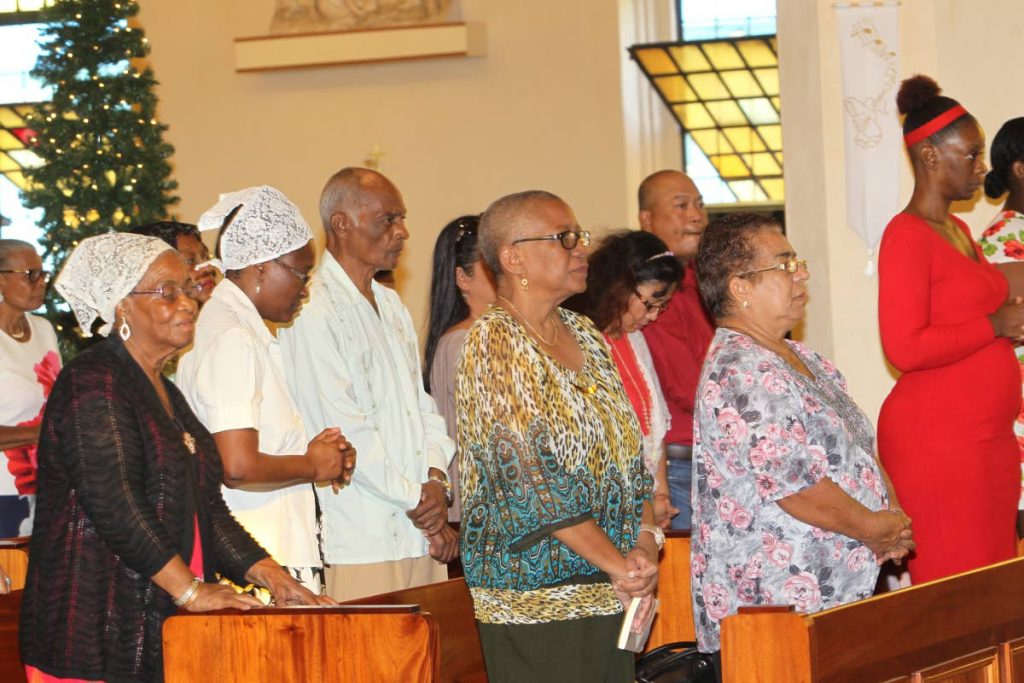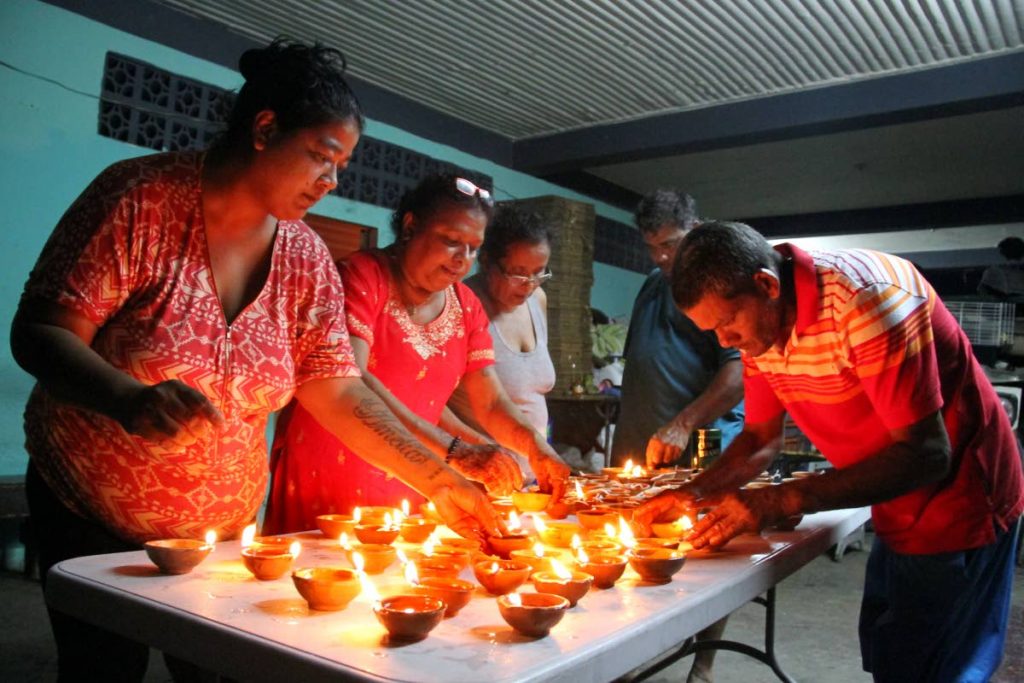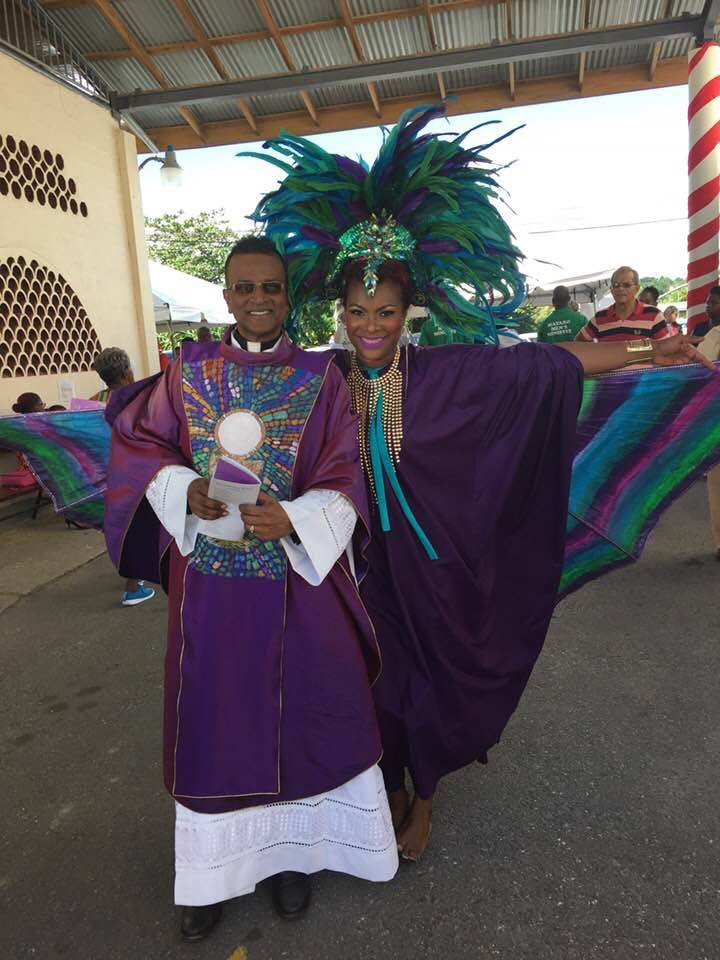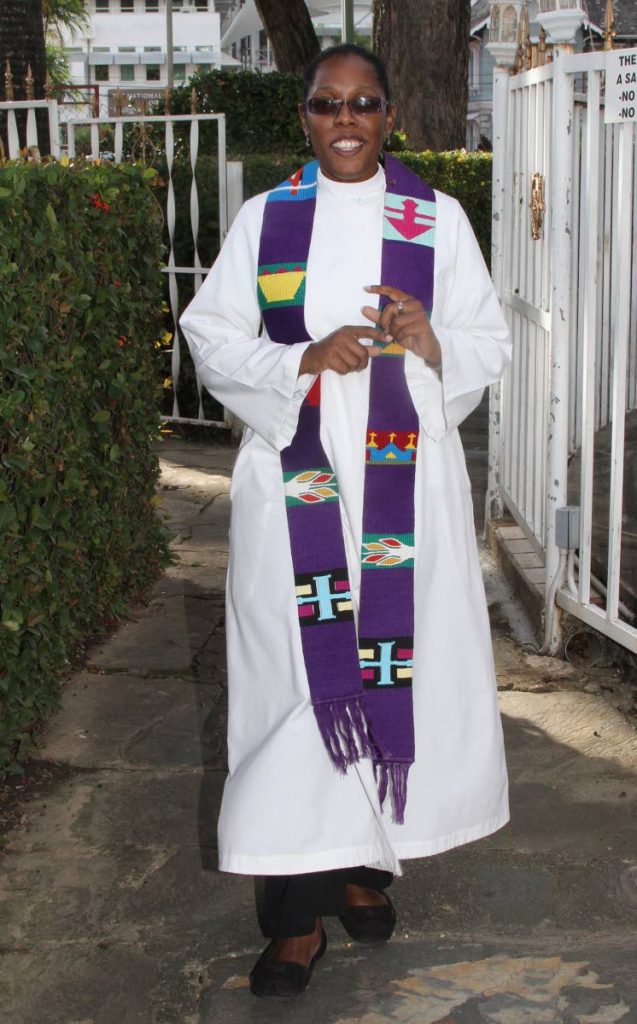Youth and religion: Giant waiting to be awakened

Churches and religious spaces are usually packed as the New Year breaks. But, to the casual participant observer, the faces in those spaces are either very old or very young. There seems to be no in between, leading some to ask, “Where have the young people gone?”
*Cynthia Ramnarine, 30, stood in front of one Frederick Street mall, rain dancing all around. Religion was probably the last thing on her mind, but when asked by Newsday, her answer was ready.
“I think youths’ approach to religion really starts at home. It is more of a social dilemma as opposed to what it is that attracts them to a church, or any particular religion, for that matter.”
Ramnarine said she’s been to a lot of different religious spaces and many were trying “new and innovative” things to draw youth into the fold.
“In generations, one or two ago, it would have been where your parents forced you to get up and go to church. Nowadays, it is that parents themselves aren’t really going to church. The church community is made up of the really old and excessively young. There is no in between,” Ramnarine said, even while saying she herself is not religious but would do what she believed was morally right.

The declining numbers of young people in mandirs, mosques and churches has been well-documented. An article by Our Sunday Visitor (one of the largest Catholic publishers globally) addressed in the issue. The story, dating from last year, said, “Young Catholics are leaving the faith. Multiple national surveys indicate that only about two-thirds or fewer millennials (those born in 1982 or later) who were raised Catholic remain Catholic as adults.”
In positing an explanation for the lack of youth in the church, the article said, from a study done by the Center for Applied Research in the Apostolate (CARA), that many were leaving the faith for science.
But the reasons for youth not participating in religion as before are manifold. There is no doubt as to whether or not there is a decline. Some of TT’s religious leaders discussed the issue of religion and youth with Newsday.
Fr Robert Christo, an RC priest for ten years, feels youth in religion is a giant waiting to be unleashed. But, he said, more creative ways were needed to get them involved.
For him, a generation so heavily influenced by social media means: “We have to find different ways of being church for them.” The church, he added, was working on making the faith and church more dynamic, relevant and relatable to a changing world through a strategic plan being developed. The shift in youth and religion comes as many more youth see themselves as spiritual rather than religious, Christo said. Offering an explanation, he said, “The whole hierarchical and institutionalised church – they are not being gravitated toward it. They need something spiritual, but they don’t see the relevance of religion.”

Things such as secularism, neo-paganism, materialism and the fact of people not connecting with what they claim to worship have also affected how youth view religion today.
Many things have shaped a certain perception around religion. Asked if scandals in the Catholic church might have affected how it is viewed, Christo said “yes”, but the church was a human institution. “Not only the scandals, but the disconnect in what the religion teaches and what we do at worship and how we connect with our lives outside.” But he is determined to reach youth. In his Penal parish, Christo engages the youth in something called corporal works of mercy.
“They are involved in mercy. We go to the sick, the runaways, vagrants, the prisons...and that is what grounds their faith: seeing it acted out and played out.”
Demonstrating this and other concepts such as otherness enshrined in the Catholic faith, Christo believes, will draw youth away from the pull of secularism. Reaching today’s youth demanded a new kind of outreach.
“The key thing is the realness and the connection, we have to work on a little tighter. The liturgies, the joy, the music, the ministries have to be touching who they are because we are living in a different world of expectation and the actual virtual world that they live in we have to be very creative.”
For Hafeez Khan, president of the Santa Cruz Jamaat and head of the National Islamic Counselling Services, reaching today’s youth demand a new way of teaching religious doctrine. Khan told Newsday what existed with religion and youth today was not much different from long ago, but with population growth it was more pronounced.
“In our faith, we do have a higher level of consciousness of the faith. However, the attendances at the mosques themselves have been reduced. We do not see the number of youth taking part in the administration or attendance.”
At his Santa Cruz mosque, to combat the problem, Khan brought youths into the administration. But even with this, combined with having a young imam, Khan still finds that “there is not the attractiveness to the activities.”

The problem is not unique to the mosques or congregations alone. He said while at a gathering at his sister’s house, in discussion with a “youngish pundit,” they both found that youth participation and attendance were low, whether it was in the mandirs or mosques.
“We both identified the problems and the possible solutions. How religion is being taught and has been taught, both in Hinduism and Islam, it has been taught as a series of roles of dos and don’ts and not principles by which you need to live by, which is what the religion really teaches. So the deficiency would lie with those who teach the religions.”
If the doctrines were taught as principles about truth, honesty, brotherhood, justice and fairness, “then as youth encounters an issue or circumstance, he would react to it based on the principles.”
He said greater dialogue was needed to deal with the social problems common to all faiths.
As seen by dean and rector of the Holy Trinity Cathedral, Port of Spain, the Very Rev Shelley-Ann Tenia, there are pockets of youth in the Anglican church. There were pockets of high youth engagement and involvement in some places, and an absence elsewhere. This, she said, was not common only to the Anglican faith or Christian denominations but to many other religions. Tenia said there were historical reasons for youth not being as involved in religion, especially in the Anglican church.

In the Anglican context, she said, there were generations of people to whom faith and religious faith was once central to their lives and the church was “one of the few places where young people could go to be safe, where their parents would allow them to go where there were social activities happening.”
The church, especially to generations born before the advent and pervasiveness of cable TV and the Internet, was the place for social mobility and education.
“It was around character formation, it was the access point to education and for many people, the access point to mobility in terms of work and other kinds of social mobility. This is just pre-independence and just out of post-iIndependence. The Anglican church was central to civic life.”
“Next to education, the thing that was most important was God,” Tenia said of how people raised their children back then. With the church playing such a strong role in education, churches saw a swell of youth being actively involved and engaged.
But then those young people grew up and had children and many of those children did not get the kind of indoctrination their parents received. Like Ramnarine, Tenia said the kind of indoctrination many earlier generations received from their “old aunts and grannies” was considered very harsh. These things led youth to move away from the church and religion. The church, Tenia said, also struggled to move with these societal shifts.
But Tenia, despite this, sees opportunity for youth. “The truth is,” she said when asked where this left religion, “sometimes things have to die so that they can find new life. Sometimes things have to be pared down.”
Tenia said there was a groundswell of young people, especially in the Anglican church, who are saying they want more. After a long period of not being able to send anyone to Codrington College, Barbados, the training ground for Anglican clergy, she said, there were now three young men there, all of whom are either in their early 30s or 20s.
While Tenia believes religious institutions as they are known today will change, religion will always exist as youth and people seek spiritual meaning.
*not her real name

Comments
"Youth and religion: Giant waiting to be awakened"